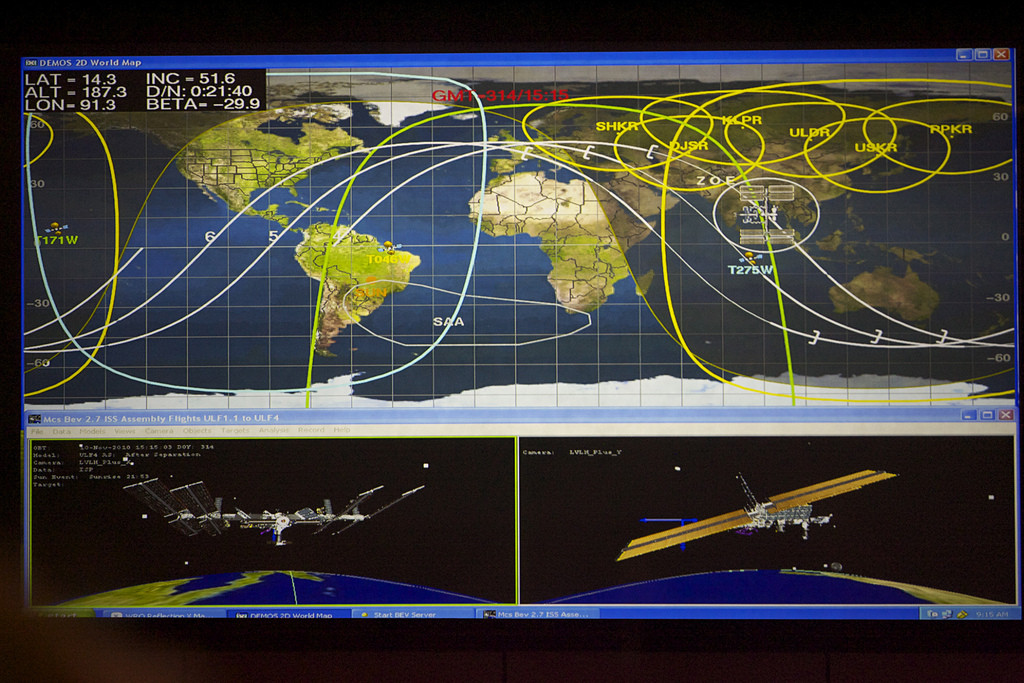Space Lodge

Formerly known as the Space Lodge BBS, during the good old Fido BBS days (1:229/618 – 1993), this area is devoted to the communications that occur in near earth and deep space. This includes satellites, ranging from weather, navigation, military, geographical study and those that men and women call home while in orbit.
Yes, you can listen to the International Space Station. There are other un-manned space vehicles that you can listen to with your scanner and shortwave receiver. With a satellite tracking program and a radio you should be able to listen to what ever is still transmitting.
Manned Space Flight
Since the early Mercury program, through the last flights of the Space Shuttle to the International Space Station, man has been on an endless trek to the moon or to Earth orbit.


ISS Communications
The International Space Station is the largest and most complex international scientific project in history. And when it is complete just after the turn of the century, the the station will represent a move of unprecedented scale off the home planet. Led by the United States, the International Space Station draws upon the scientific and technological resources of 16 nations: Canada, Japan, Russia, 11 nations of the European Space Agency and Brazil.
More than four times as large as the Russian Mir space station, the completed International Space Station will have a mass of about 1,040,000 pounds. It will measure 356 feet across and 290 feet long, with almost an acre of solar panels to provide electrical power to six state-of-the-art laboratories.
The station will be in an orbit with an altitude of 250 statute miles with an inclination of 51.6 degrees. This orbit allows the station to be reached by the launch vehicles of all the international partners to provide a robust capability for the delivery of crews and supplies. The orbit also provides excellent Earth observations with coverage of 85 percent of the globe and over flight of 95 percent of the population. By the end of this year, about 500,000 pounds of station components will be have been built at factories around the world.
The ISS Communication system transfers telemetry information about orbiter operating conditions and configurations, systems and payloads; commands to the orbiter systems to make them perform some function or configuration change; documentation from the ground that is printed out on the orbiter’s teleprinter or text and graphics system; and voice communications among the flight crew members and between the fight crew and ground.
This information is transferred through hardline and radio frequency links. Hardline refers to wires that connect communicating devices, and RF refers to radio signals. RF communication takes place directly with the ground or through the TDRS.
Direct communication takes place through Air Force Satellite Control Facility remote tracking station sites, also known as space-ground link system ground stations, for military missions or through STDN ground stations for NASA missions. Direct signals from the ground to the ISS are referred to as uplinks, and signals from the ISS to the ground are called downlinks.

TDRS communication takes place through the White Sands Ground Terminal. These indirect signals from the TDRS to the orbiter are referred to as forward links, and the signal from the orbiter to the TDRS is called the return link. Communication with a detached payload from the orbiter is also referred to as FL, and RL is the signal from the payload to the orbiter.
The ISS communication system is divided into several smaller systems to facilitate information transfer: S-band frequency modulation, S-band phase modulation, Ku-band ultrahigh frequency, payload communications, audio and closed-circuit television.The S-band FM, S-band PM, Ku-band and UHF systems are used to transfer information between the orbiter and the ground on RF signals in their frequency bands. The payload communication system is used to transfer information between the orbiter and its payloads either through hardline or RF links. The audio systems transfer voice communications throughout the orbiter, and the CCTV system is used for visually monitoring and recording activities. Communication security equipment aboard the ISS provides the capability for encryption and decryption of operational data.
Operations Radio Frequencies
Zvezda Service Module:
143.6250 FM voice A/G VHF-1 (TsUP-M)
130.1670 FM voice A/G VHF-2/TORU (TsUP-M)
139.2080 FM voice A/A VHF-1
121.7500 FM voice A/A VHF-2/TORU
121.7500 FM EVA-1
130.1670 FM EVA-2
247.0000 AM EVA Data 1
231.0000 AM EVA Data 2
Russian Orbital Segment:
130.1670 FM TORU Control system
121.7500 FM TORU Control system
165.8800 FM TLM system
166.1300 FM TLM system
628.1250 PCM/AM Zvezda TLM system
630.1250 PCM/AM Zvezda TLM system
632.0000 PCM/AM Zarya TLM system
634.0000 PCM/AM Zarya TLM system
922.7600 CW Kvant Beacon (768.975 Uplink)
US Orbital Segment:
414.2000 FM UHF Space/Space
Soyuz/Progress:
121.7500 FM voice downlink
166.1400 AM telemetry (165-167 MHz)
922.7600 CW beacon
Former Shuttle frequencies:
259.7000 AM A/G voice downlink (296.8 Secondary)
410.2000 FM EVA (new)
279.0000 AM EVA (old)
243.0000 AM EVA/Emergency
2250.0000 FM S-Band A/G
2106.4063 PM S-Band Primary
2041.9479 PM S-Band Secondary
2287.5000 PM S-Band Primary A/G
2217.5000 PM S-Band Secondary G/A
Awards

In May of 2001, ScannerDesk/SpaceLodge (now VA3DBJ.ca) had been selected by “The Ol’ Pad Rat” for the coveted and selective “Pad Rat Award for Launch-Quality Space Pages” . “Pad Rat” has been used as a colloquial term for those Cape Canaveral/KSC Launch Processing folks who exemplify exceptional devotion to Safety, Reliability and Quality in Launch Facility and Processing matters, Spacecraft Hardware, and to the Flight and Ground Support Personnel who work with and/or fly in The Manned Space Programs. A “Pad Rat” (The omnipresent “Ghost” of a 1960’s version appears in the Award), spent so much time, usually above and beyond the required, at the Pad or other Processing facilities, that they were barely discernible from the other resident denizens. Some say they still “haunt” the premises – Awarded by the Air Force Space and Missile Museum.






